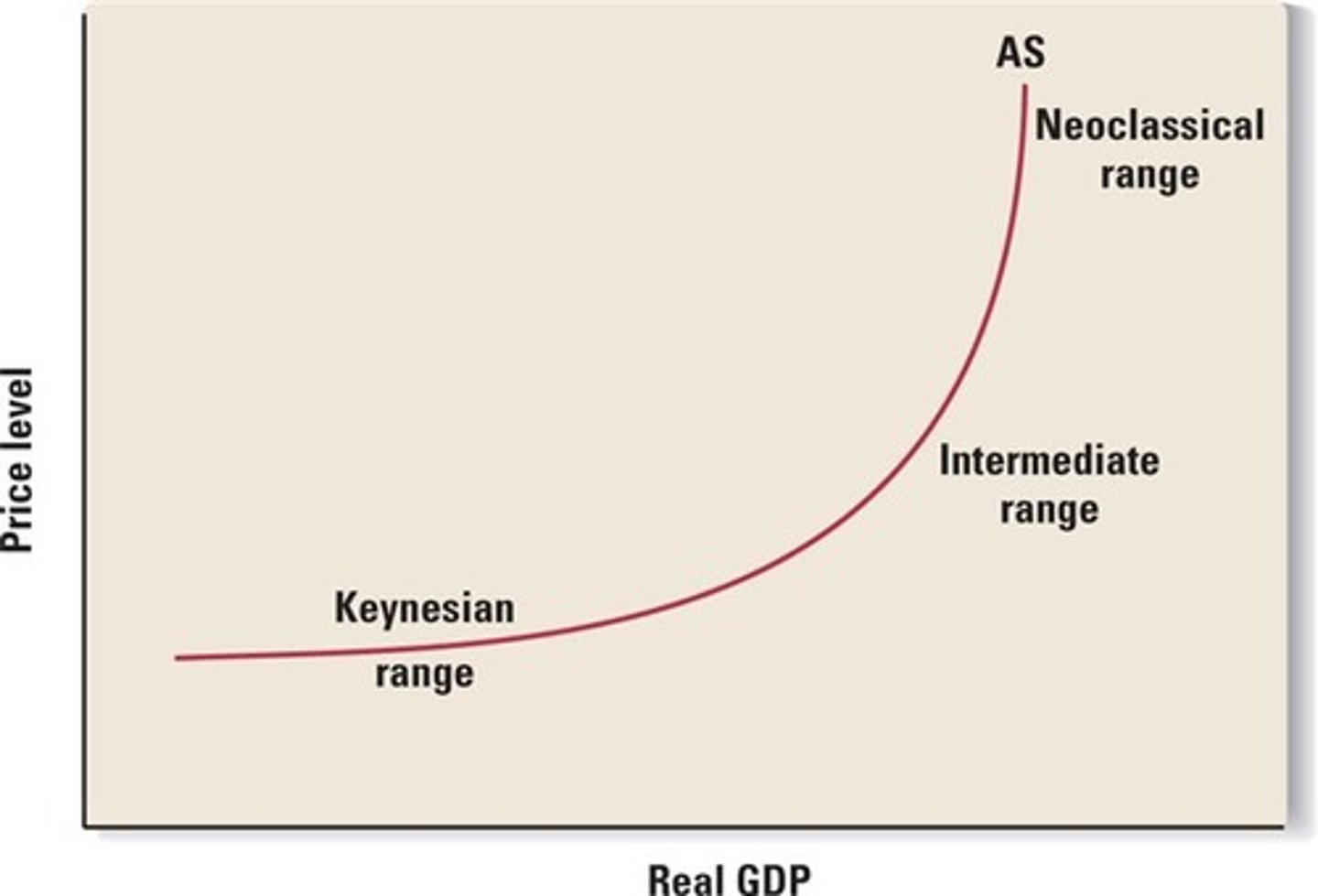AP Macroeconomics Vocab: Unit 3- Aggregate Demand and Aggregate Supply
1/25
There's no tags or description
Looks like no tags are added yet.
Name | Mastery | Learn | Test | Matching | Spaced |
|---|
No study sessions yet.
26 Terms
Aggregate Demand
All the goods and services that buyers are willing and able to purchase at different price levels. Same thing as real GDP. There is an inverse relationship between price level (PL) and real GDP (rGDP)
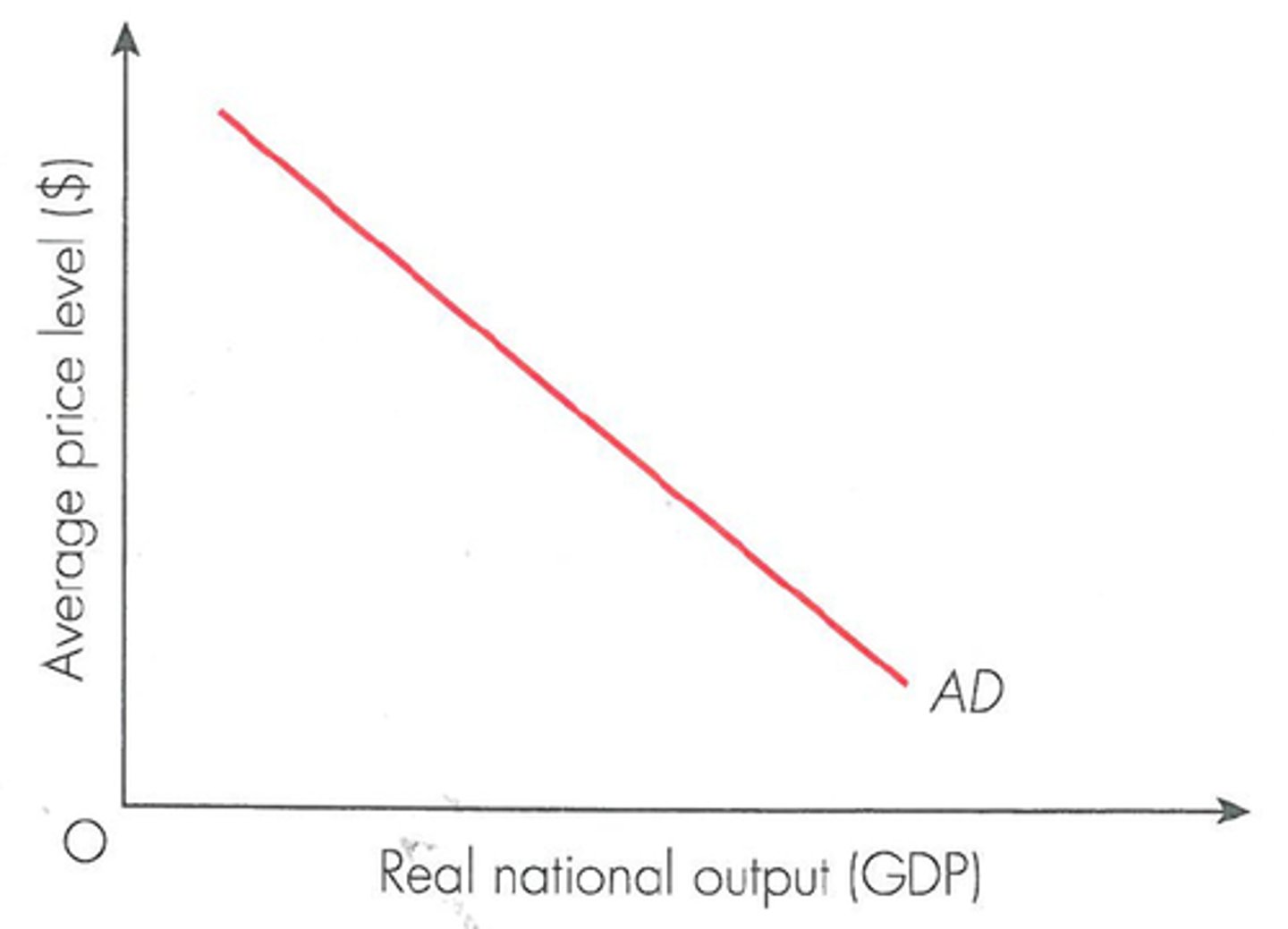
Aggregate
Added all together
Causes the Downward Slope of AD
1. Wealth Effect
2. Interest Rate Effect
3. Foreign Trade Effect
Wealth Effect
Higher price levels reduce the purchasing power of money; lower price levels increase purchasing power and increase expenditures. Example: If the price of something doubles, people will buy less because their purchasing power decreased. As a result, GDP demanded decreases
Interest Rate Effect
When the price level increases, lenders need to charge a higher interest rate to get a real return on their loans.; in short, higher interest rates discourage consumer spending and business investment. Example: If the price of something increases, it will lead to more people taking out loans, which will cause the interest rate to rise so lenders can get a return on their loan
Foreign Trade Effect
When the price level of U.S. goods rises, foreign buyers purchase fewer U.S. goods and Americans buy more foreign goods. Exports fall and imports rise causing real GDP demanded to fall (Xn decreases). Example: If prices in the U.S. triple, Canada will no longer buy as many U.S. goods causing the quantity demanded of U.S. products to fall. As a result, GDP demanded will fall
Shifters of Aggregate Demand
1. Change in Consumer Spending
2. Changes in Investment Spending
3. Change in Government Spending
4. Change in Net Exports
Change in Consumer Spending
Examples include: increase in disposable income, change in consumer expectations, household indebtedness, taxes
Changes in Investment Spending
Examples include: change in real interest rates, future business expectations, productivity, and technology, business taxes
Changes in Government Spending
Example: government expenditures
Changes in Net Exports
Examples include: change in exchange rate (US dollar depreciates compared to euro- shift right) and national income compared to abroad (importer has recession- shift left)
Aggregate Supply
Amount of goods and services (real GDP) that firms will produce in an economy at different price levels; differentiates between short run and long run

Short Run Aggregate Supply
Wages and resources will not increase as price level increases; with higher profits, a firm has an incentive to increase production. Example: Firm makes 100 units that are sold for $1 each with an $80 cost in labor. Profit is $20. If this price of the unit doubles, the profit will increase to $120
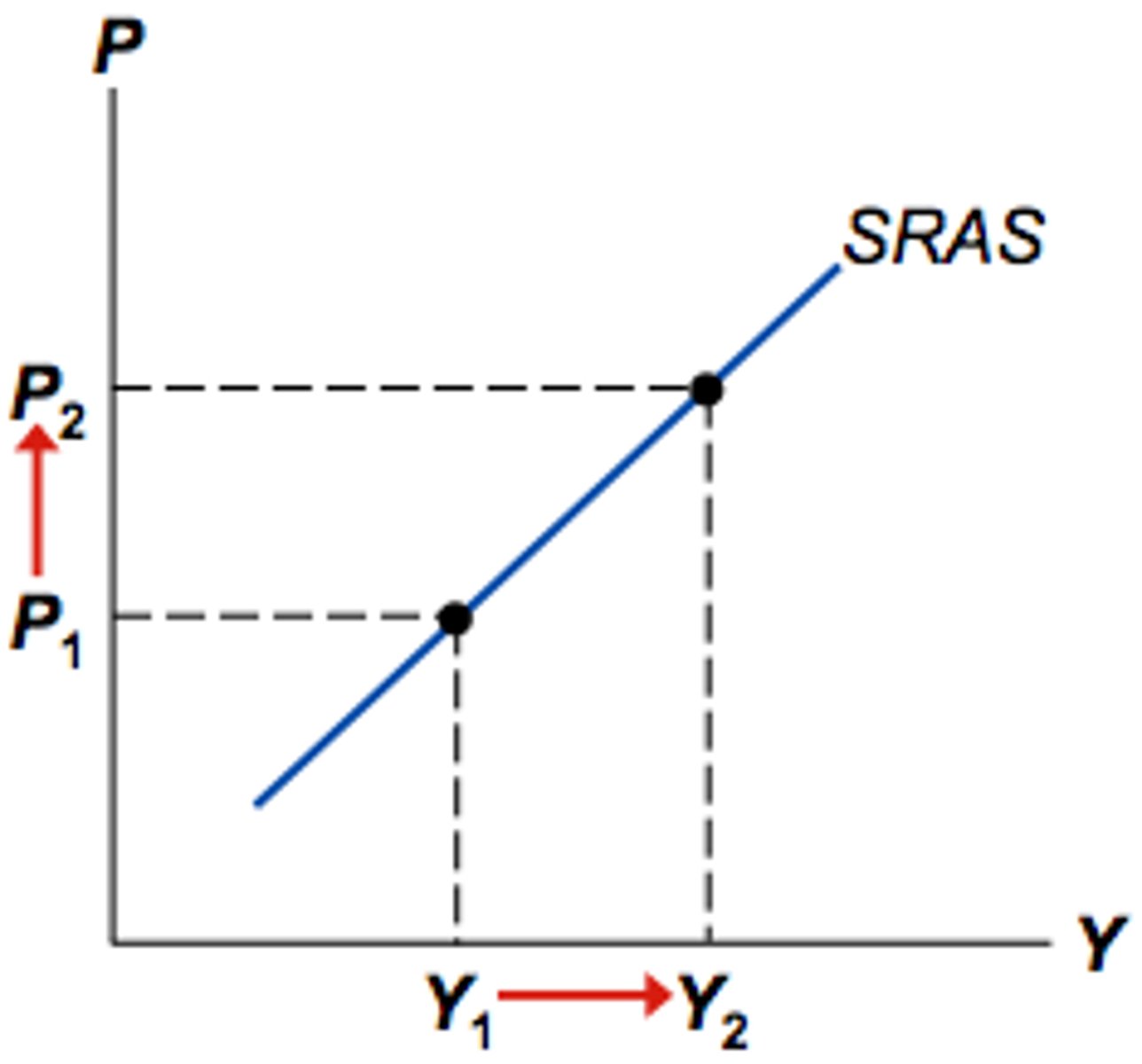
Long Run Aggregate Supply
Wages and resource prices will increase as price levels increase; if real profit doesn't change, firm has no incentive to increase output. A second shift will bring this back to equilibrium
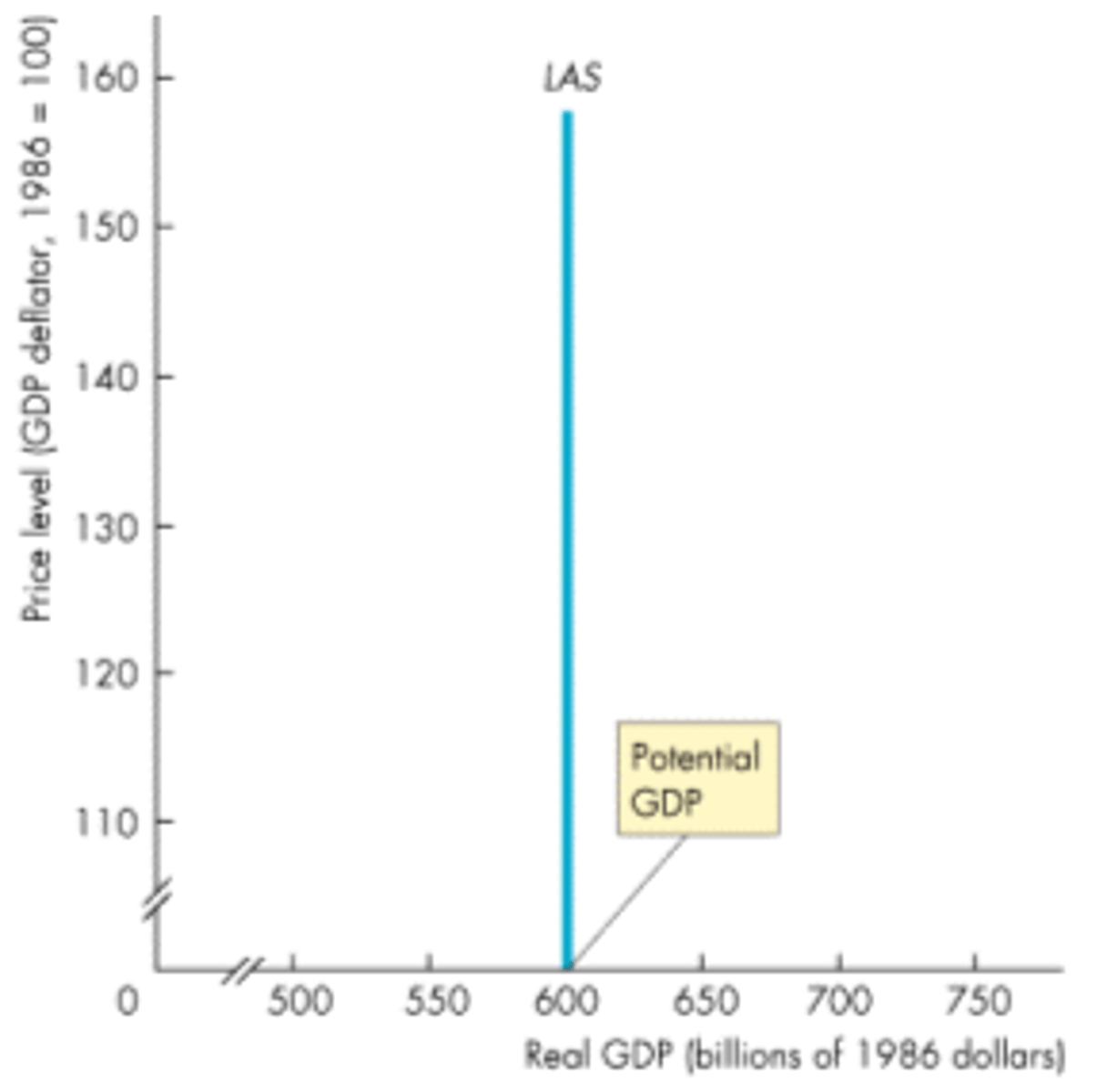
Shifters of Aggregate Supply
1. Change in Resource Prices
2. Actions of Government
3. Change in Productivity
Change in Resource Prices
Examples include: change in cost of factors of production, change in price of domestic and imported resources, supply shocks, and inflationary expectations; if producers expect higher prices in future workers will demand higher wages and costs will increase. This will decrease AS
Actions of Government
Does not include government spending; examples include: taxes on producers, subsidies for domestic products, and government regulations
Change in Productivity
Example: technology increases this; LRAS is only shifted by this
Inflationary Gap
Occurs when equilibrium is to the right of the LRAS; output is high and unemployment is less than NRU; actual GDP is above the potential GDP
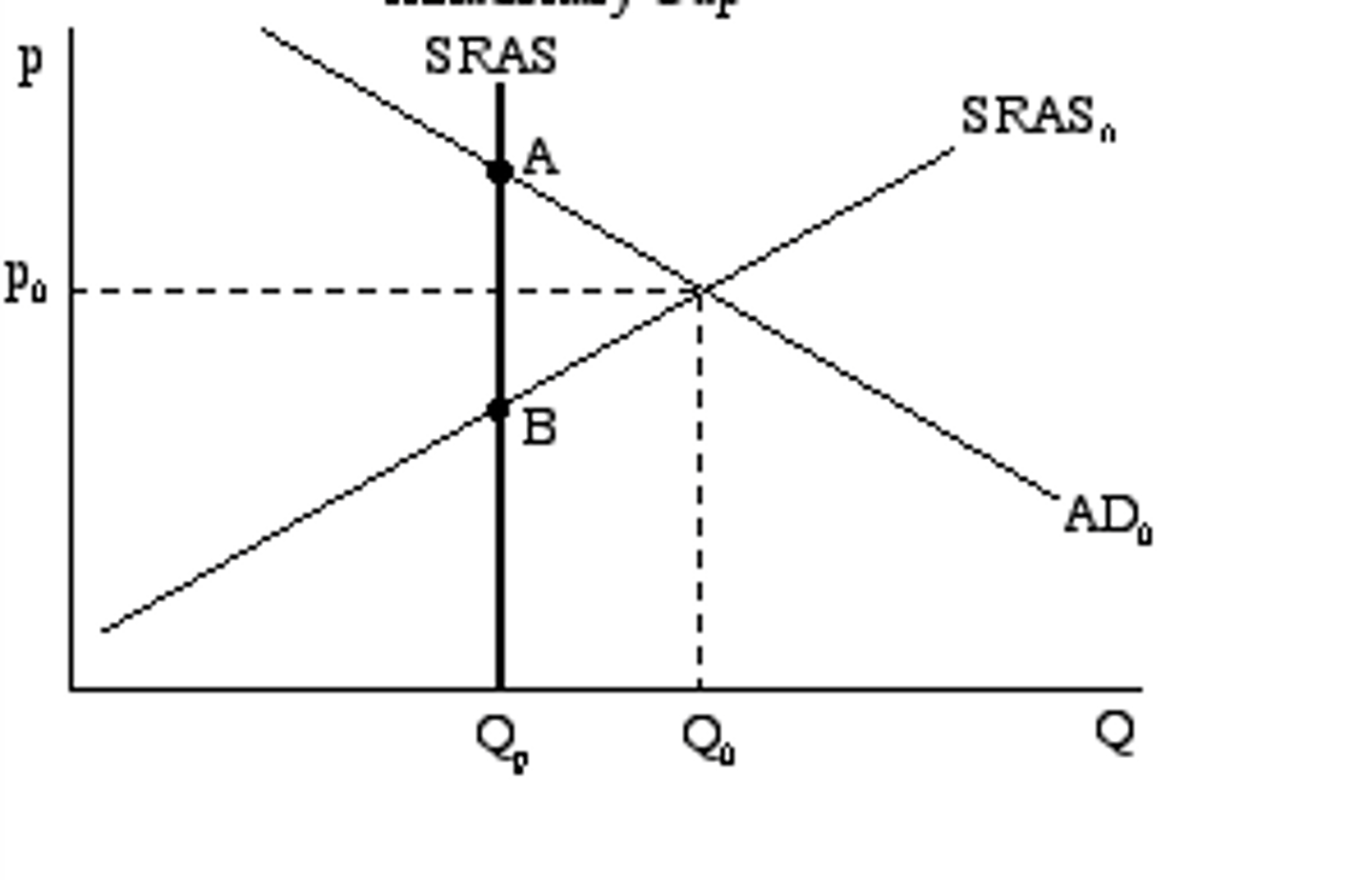
Recessionary Gap
Occurs when equilibrium is to the left of the LRAS; output is low and unemployment is more than NRU; actual GDP is below potential GDP

Stagflation
A type of recessionary gap where the price increases and the quantity decreases
Capital Stock
Machinery and tools purchased by businesses that increase their output; when looking at PPC it would shift outward
Economic Growth
Only thing that can cause this is investment since firms are able to increase their capital stock; it doesn't go back to equilibrium it shifts the LRAS
Classical Theory
A change in AD will not change output even in the short run because prices of resources (wages) are very flexible; recessions caused by fall in AD are temporary; price will fall and the economy will fix itself; stresses not government involvement
Keynesian Theory
Wanted government involvement in the economy; believed economists should suggest policies; that could help the economy such as deficit spending; believed that if there is a decrease in AD, it will lead to a persistent recession because prices of resources are NOT flexible- doesn't necessarily cause inflation; believed and increase in AD during the recession doesn't put pressure on prices
Three Ranges of Aggregate Supply
1. Keynesian: horizontal at low output
2. Intermediate Range: upward sloping
3. Classical Range: vertical at physical capacity
